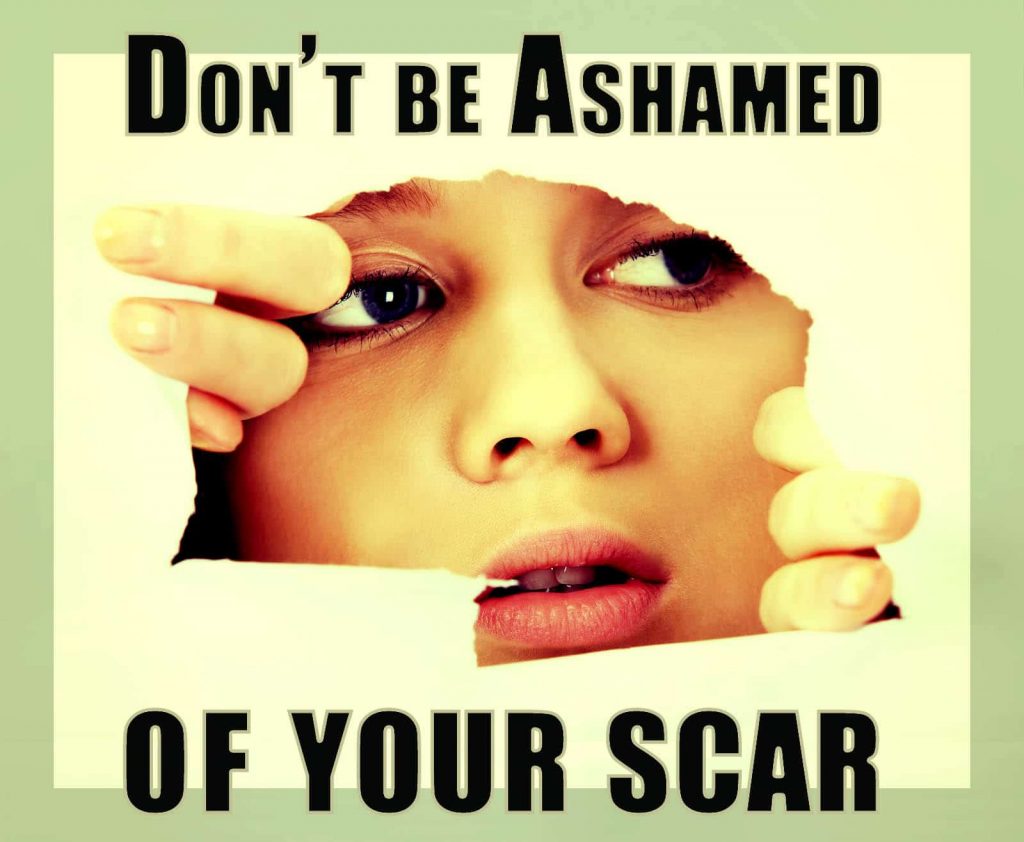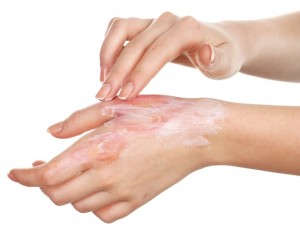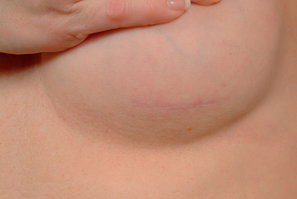Unless you cloak yourself in bubble wrap and tape yourself to the couch, you will end up with a scar at some point. Precautions, such as wearing gloves when working in the garden or protective gear when bicycling, can help to circumvent scrapes and cuts which lead to scarring. It is strange to think that scarring is not supposed to be a bad thing. Scar tissue is the body’s way of healing itself after surgery or an injury but nobody is pleased to see a scar form. Scars that are raised, red, itchy or wide may need a form of scar revision to minimize their appearance. However, the best way to avoid a scar is to treat the wound properly. While a doctor will establish proper wound care for a surgical scar, here are some tips to help you avoid scar development:
- Cleanse the Wound
 It is very important to keep the wound properly cleansed. Gently wash the wound with a mild soap and lukewarm water to get rid of germs and remove debris. If dirt and particles remain in the wound after a thorough washing, use tweezers to carefully remove them. Be sure to clean the tweezers with alcohol before removing the fragments. A wound that is clean will heal quicker, neater and is less likely to develop into a scar than one that becomes infected. Hydrogen peroxide and rubbing alcohol are not recommended since alcohol can be irritating to damaged skin and hydrogen peroxide destroys white blood cells needed to repair the wound.
It is very important to keep the wound properly cleansed. Gently wash the wound with a mild soap and lukewarm water to get rid of germs and remove debris. If dirt and particles remain in the wound after a thorough washing, use tweezers to carefully remove them. Be sure to clean the tweezers with alcohol before removing the fragments. A wound that is clean will heal quicker, neater and is less likely to develop into a scar than one that becomes infected. Hydrogen peroxide and rubbing alcohol are not recommended since alcohol can be irritating to damaged skin and hydrogen peroxide destroys white blood cells needed to repair the wound.
- Keep the Wound Moist
While some people say to let the wound have air so it can scab over, scabs are not our friends. Scabs allow scarring to occur so keeping the wound moist and covered is a better way to avoid scars. Moisture prevents a hard scab from being able to form since it slows the development of new tissue but it does allow cells to regenerate faster. If the wound is properly cleansed, don’t grab Neosporin or other ointments since they can impede wound cleansing. Instead, apply petroleum jelly to the wound and a bandage. Keeping the wound moist with petroleum jelly can keep the scar from becoming too large, deep or itchy. If a scab does form, do not pick at it. Otherwise, you are likely to get a worse scar.
- Cover it Up
Research has shown that keeping a bandage on a wound speeds healing by as much as 50%. Cleanse the area, reapply ointment and change the bandage daily to keep the wound clean and free of infection as it heals. Anyone who has sensitive skin can use a non-adhesive gauze pad and paper tape. A large cut should be examined by a doctor to determine whether stitches are needed. However, you may be able to close small cuts or gaps with a butterfly bandage. Butterfly bandages can help keep a fresh wound closed for better healing and minimal scarring. These bandages can be found at most drugstores.
- Consider Silicone Gel
If you have large scrapes, burns, sores or persistent redness, you may want to consider using silicone gel sheets or hydrogel. Silicone gel sheets can help to promote healing while minimizing scar formation. Silicone gel sheets can also be used after a scar has already formed. They can help to flatten raised scars and tone down redness and/or itchiness. Follow the directions on the package or the advice of a doctor for changing the gel sheet.
- Eat Healthy and Exercise
Eating a balanced diet and getting exercise can help ward off scars. While protein and vitamins are essential to the body, getting adequate zinc is especially important for wound healing. Grab some roasted pumpkin seeds, sunflower seeds, peanuts, Brazil nuts, lean beef or dark-meat turkey to help avoid scarring. Exercise can speed the healing process because exercise increases circulation and regulates the immune system and hormones that influence the healing process.
- Apply Sunscreen Religiously
Once the wound has healed, frequently apply a broad-spectrum sunscreen whenever going outside. The sunscreen should be a SPF of 30 or more since scars are very vulnerable to sunburns. Scar tissue lacks the ability to develop a tan since it has less pigment than the surrounding skin. Furthermore, UV rays are known to slow healing since they interfere with new collagen production. Sunscreen may help to decrease red or brown discoloration and help the scar fade at a quicker rate.

 After surgery, the body uses its ability to create scar tissue to heal the new wound. However, excess scar tissue beneath the skin can be troubling even after the wound has healed. The tough, fibrous tissue can cause pain and significantly reduce function or range of motion. This decrease in function may transpire due to the direction of the incision and/or the depth of the wound.
After surgery, the body uses its ability to create scar tissue to heal the new wound. However, excess scar tissue beneath the skin can be troubling even after the wound has healed. The tough, fibrous tissue can cause pain and significantly reduce function or range of motion. This decrease in function may transpire due to the direction of the incision and/or the depth of the wound.




 Scars on the body can be caused by a number of factors and they can result in emotional pain for a longer length of time than the actual physical pain and discomfort from the scars.
Scars on the body can be caused by a number of factors and they can result in emotional pain for a longer length of time than the actual physical pain and discomfort from the scars. Patients who had surgery to increase their breast size, reduce their breast size or have undergone a mastectomy will normally see some scarring from the procedure. With most
Patients who had surgery to increase their breast size, reduce their breast size or have undergone a mastectomy will normally see some scarring from the procedure. With most  Scar tissue is a beauty concern for many people. When the natural skin has been damaged beyond its first layer, scar tissue is the tissue which replaces it. Scar tissue is the same tissue as healthy skin even though it looks different. This is because the fibers are arranged differently within the tissue.
Scar tissue is a beauty concern for many people. When the natural skin has been damaged beyond its first layer, scar tissue is the tissue which replaces it. Scar tissue is the same tissue as healthy skin even though it looks different. This is because the fibers are arranged differently within the tissue.